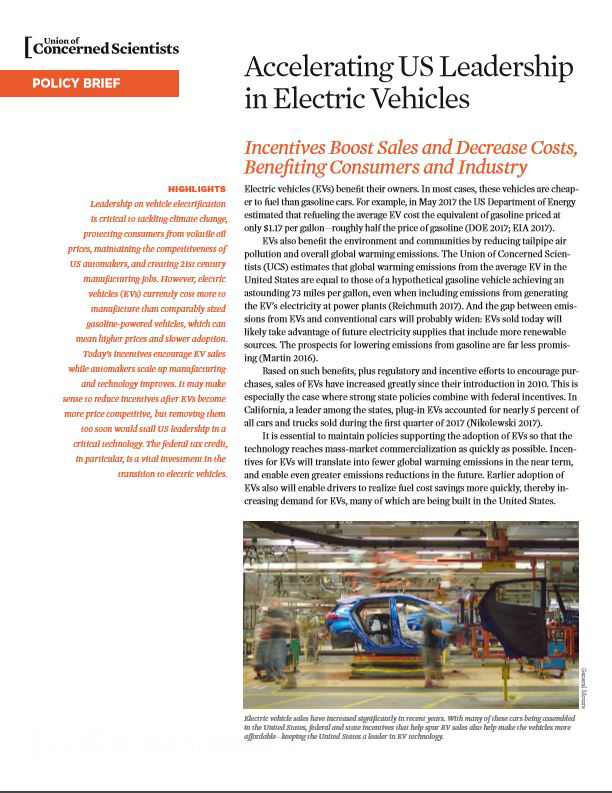The early adoption of electric vehicles (EVs) is critical to reducing global warming emissions, and transportation costs for drivers in the US. Incentives for EVs, like the federal tax credit, are an important tool to achieve this goal.
Today’s incentives encourage EV sales while automakers scale up manufacturing and technology improves. It may make sense to reduce incentives after EVs become more price competitive, but removing them too soon would stall US leadership in a critical technology.

- Policies supporting the adoption of EVs are essential for the technology to reach mass-market commercialization as quickly as possible. Incentives for EVs will translate into fewer global warming emissions in the near term, and enable even greater emissions reductions in the future. Earlier adoption of EVs will enable drivers to save money on fuel, thereby increasing demand for EVs, many of which are being built in the United States.
- Mass-market commercialization will make EVs cheaper. Today’s battery packs make the cost to manufacture EVs 1.5 to 2.5 times that for manufacturing similarly sized gasoline vehicles. However, such cost differences will decline significantly as the volume of battery production increases and manufacturers use lessons learned from prior vehicle and battery designs.
- Financial incentives for EVs contribute to building a market. The EV market, while rapidly growing, is in its infancy, accounting for less than 1 percent of US new vehicle sales in 2016. With the higher manufacturing costs of EVs, federal and state financial incentives are instrumental to making electric cars competitive, driving growth. All major automakers in the US have announced plans to increase the number of EV models offered, from today’s 30 models to more than 70 in the next five years.




